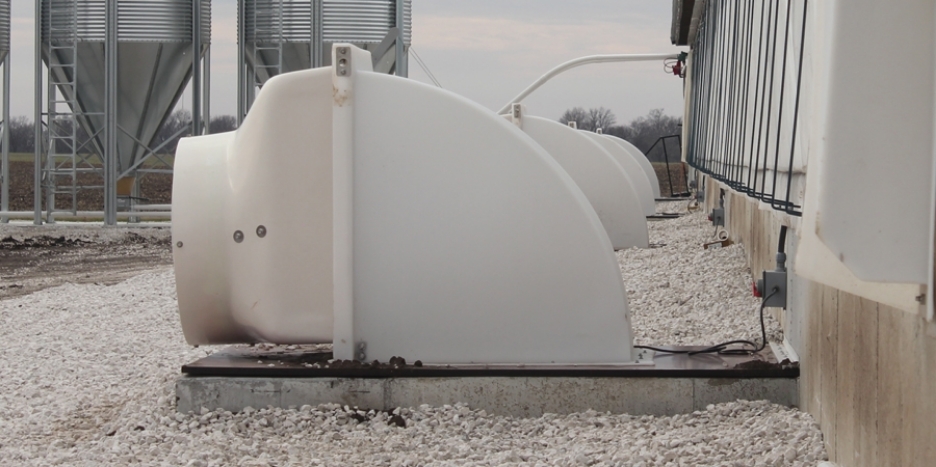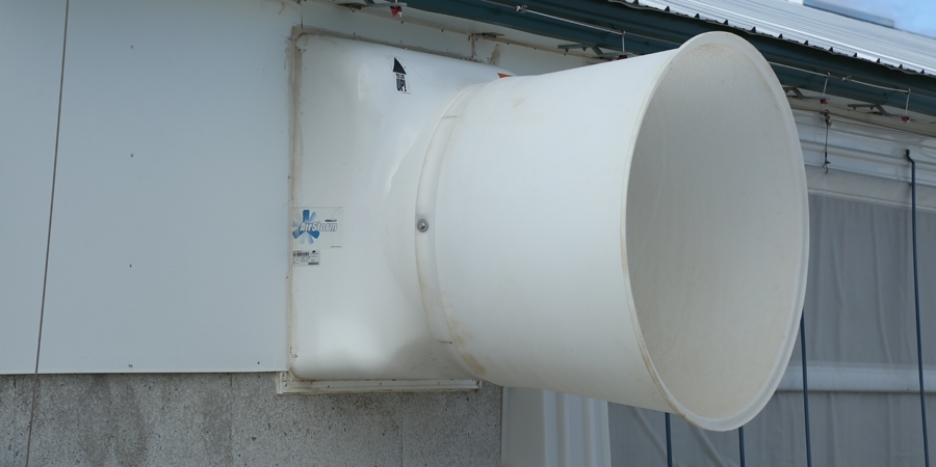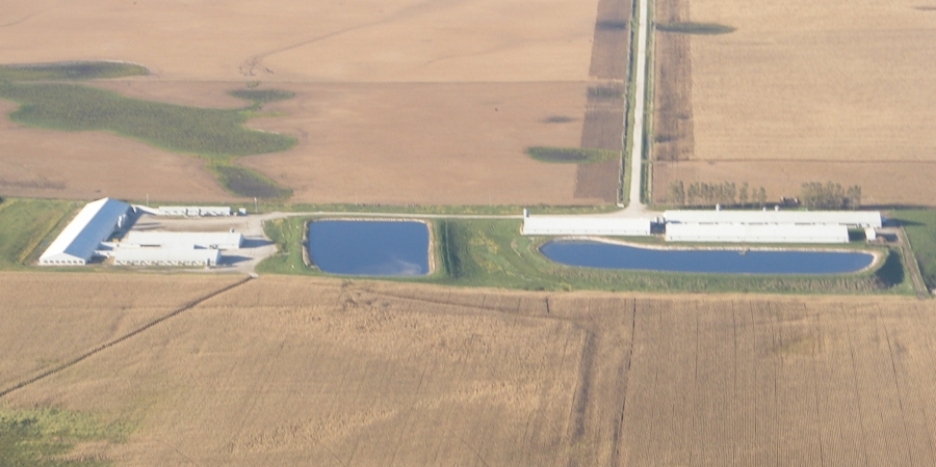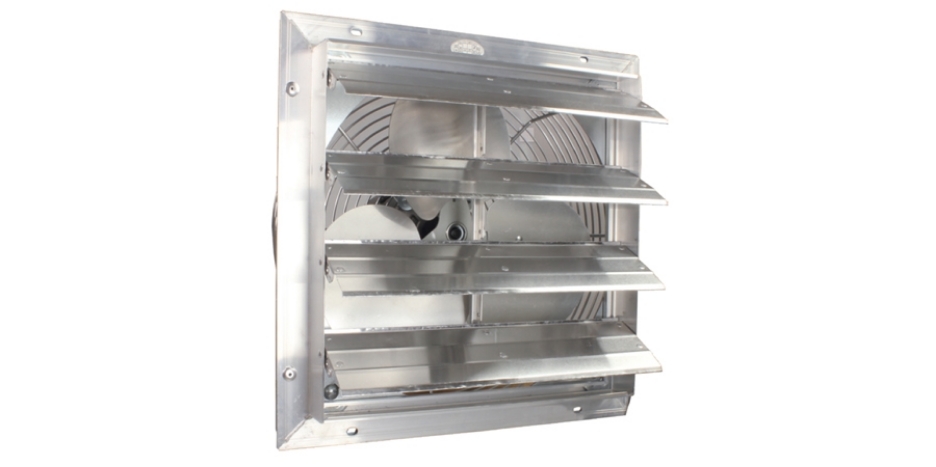Preliminary field test reveals similar gas levels in buildings with and without pit ventilation.
Blog posts of '2018' 'October'
A new control system allows larger fans to be converted to variable speed with improved accuracy and reduced energy consumption.
Most fans used for minimum winter ventilation rates tend to be smaller diameter fans. It's necessary to use fans with a lower total cubic foot per minute output as the most common method of slowing the fan to reduce air volume is reducing the voltage going to the motor. It is generally advised not to operate voltage-regulated fans at speeds below 40-50% of their maximum revolutions per minute to prevent the motor from overheating and stalling.
Although smaller fans are effective in delivering the correct minimum rates they do not significantly contribute to the total cfm rate needed to cool the building during maximum ventilation or perform at the highest energy efficiency.
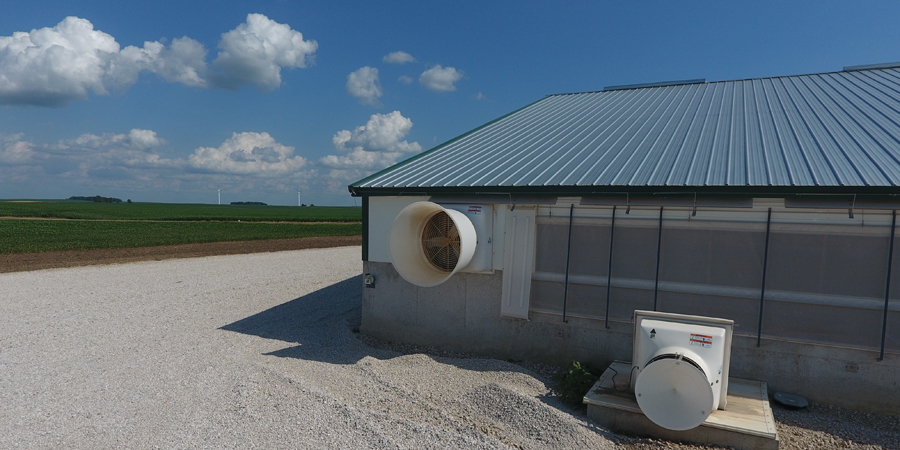
A new method of controlling variable speed fans allows using larger, higher-capacity fans to accurately deliver lower cfm needed for minimum ventilation rates.
Variable Frequency Drive or VFD system uses a three-phase single-speed motor, and VFD controller. A VFD controller receives a 0 to 10-volt signal from the house controller and sends a corresponding signal to the fan motor in frequency or hertz. The full range of a VFD fan varies from full delivery down to nearly zero. This lower cfm range permits a producer to replace several smaller minimum fans on existing facilities with a single, larger VFD fan also functioning as a tunnel fan in the summer. Varying the hertz to control fan speed has a significant advantage over using voltage including less motor overheating and improved energy efficiency because decreasing frequency also reduces power consumption.
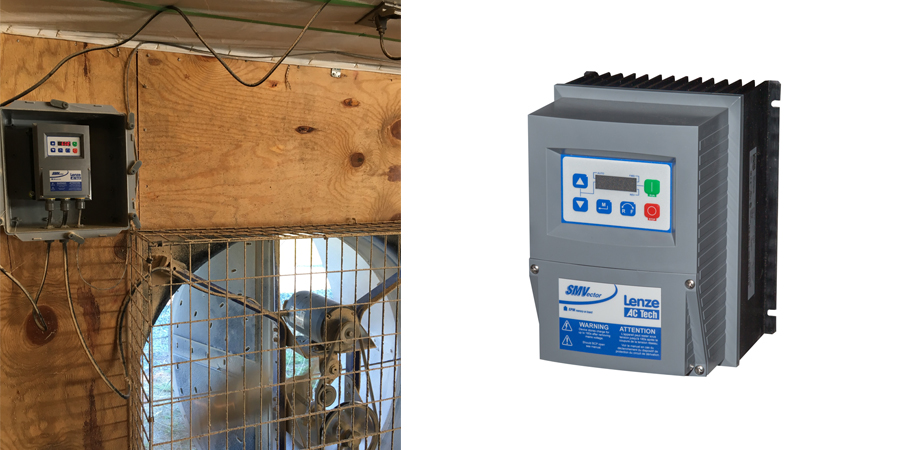
Most fans can be converted to the VFD system by swapping the motor with a three-phase motor and adding a VFD controller. Most whole house computer style controllers are capable of sending a 0 to 10-volt signal to the VFD control. Older style controllers with on-off signals can also be used with a slightly different method. The VFD controller features a manual speed control knob. The operator can set the minimum ventilation, and the ventilation control can override the VFD control and run the fan at high if the building temperature increases. As the building cools down, the control shuts off and the fan returns to the minimum rate set on the VFD control.
By Austin Baker, Ventilation Director for Hog Slat Inc. You can contact Austin at jabaker@hogslat.com
Following these four steps will help you get the best price for your production site.
1) Hire the right realtor...you aren't selling a cornfield.
While a local ag realtor might be the right choice for listing farm ground, a realtor specializing in swine production facilities will be a better option. This type of realtor will help you establish a realistic selling price for your facility by performing a comparison analysis against similar buildings. Firms regularly performing appraisals of livestock buildings will give you the most accurate evaluation.
2) Make a good first impression...and that starts with the realtor.
"The first thing a potential buyer sees is the pictures I take during the initial site visit,” says Dale Kenne, a realtor with Agri-Management Services located in Marion, Iowa, "No one expects a manicured yard and gravel borders but at least the grass should be mowed, and the trash picked up. I recently visited a finishing building that had been remodeled several years earlier and still had the old equipment laying around with weeds growing through it. It was hard to take a picture without some discarded equipment showing up in the background."
3) What about remodeling...how do you get your money back?
"We generally feel the building should be capable of functioning with its existing equipment," Dale explained. "Even if the feeders are needing replacement, and the ventilation system an upgrade it doesn't make much sense for the seller to do the remodeling. In most cases, the new owner will probably need to make those changes based on the requirements of their chosen integrator."
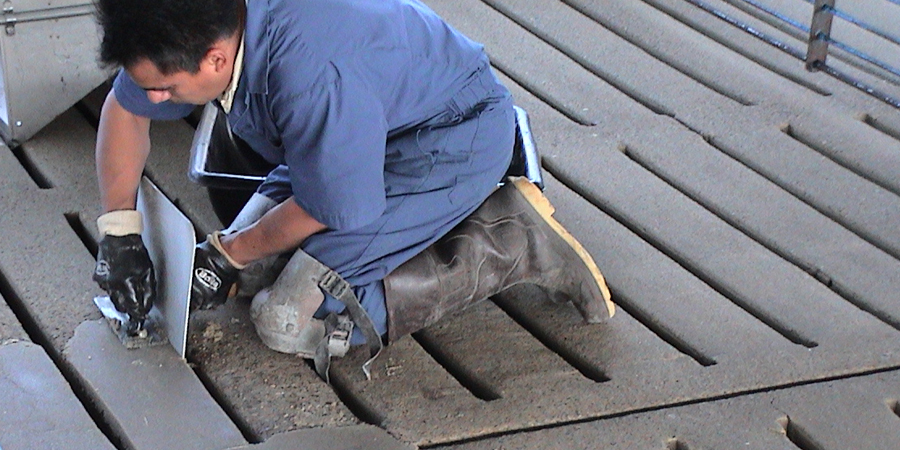
"The existing equipment doesn't have to be new, but it should be in good working order, Kenne says "Patch any badly worn slat areas around feeders, and waterers with Con-Korite™ and replace any severely damaged slats. Treat and cover any rust spots on the ceiling with a repair product like WMC-100. Tighten the legs on the penning and replace any missing gate rods and latches. Replace curtains with holes or tears, repair the curtain ropes and rehang missing curtain pockets. Doors, especially those on the exterior, should fit tight and have any missing knobs replaced."

4) Little things make a difference... and they aren't expensive.
"Getting a building ready to sell usually doesn't cost a lot of money," Kenne says. "Some simple things include replacing the burned-out light bulbs, knocking the cobwebs down and washing the alleyways. You wouldn't believe the number of buildings I go in and see missing fan shutters and electric covers, ceiling inlets hanging open without counterweights, etc. In the office area, the showers and restrooms should be clean enough your mother would be OK using them!"
Dale Kenne can be contacted at dale@agri-management.com
As the weather cools, regulating the environment inside livestock and poultry buildings becomes more difficult with manually operated vent doors. Adding a small ventilation fan(s) simplifies the task of maintaining a healthy environment for the animals.
- 2026
- 2025
- 2024
- 2023
- 2022
- 2021
- 2020
- 2019
- 2018
- 2017
- 2016
- 2015
- 2013












 Україна
Україна Méjico
Méjico